By Jon Paul Driver
A Divided House in Agriculture
Few topics divide farmers more quickly than government programs. For some, crop insurance and disaster payments are simply part of running a modern farm business. For others, they represent everything wrong with agriculture: dependency, distorted markets, and too much government in farmers’ lives.
The split isn’t new, but it cuts deep. Every farm bill debate, every round of drought assistance, every conversation about crop insurance brings it back to the surface. Some farmers proudly declare they’ve never taken a government check. Others admit that without programs, they couldn’t have survived the last ten years.
Why the stark divide? The answer lies in philosophy, economics, and lived experience.
The Philosophy of Independence
Many farmers, especially those who grew up in the shadow of the Great Depression or the farm crisis of the 1980s, view government support with suspicion. They remember the stigma of “taking a check” when neighbors whispered about who was “on the dole.”
For these producers, farming is as much an identity as an occupation. Independence, grit, and self-reliance are central to that identity. Accepting a government payment can feel like admitting failure — proof they couldn’t survive on their own.
This philosophy often ties into a broader political worldview. A conservative suspicion of government in general translates easily into a rejection of subsidies and insurance. For these farmers, fewer programs mean more freedom.
The Economics of Survival
Yet philosophy runs headlong into reality. Modern farms operate on razor-thin margins and face risks their grandparents never imagined.
-
Debt and Scale: Larger farms carry larger operating loans. Lenders routinely require crop insurance to secure those loans. For many farmers, insurance isn’t optional — it’s the cost of getting credit.
-
Specialization: A corn or cotton farm that relies on a single crop can’t spread risk across enterprises. Without a safety net, one bad season could end the business.
-
Market Volatility: Global trade wars, shifting exchange rates, and consumer trends can swing commodity prices in ways no farmer can control.
In this environment, programs and crop insurance act as stabilizers. They don’t make anyone rich, but they keep farms from collapsing. For many, rejecting them isn’t an option if the farm is to survive another season.
Regional and Commodity Differences
Attitudes also depend on what and where a farmer produces.
-
Row Crops: Corn, soybean, wheat, and cotton growers have lived with government programs for generations. They are built into the business model. Stepping away would be like refusing to use crop rotation or fertilizer.
-
Livestock: Historically, cattle producers had fewer safety nets. Many take pride in surviving without payments. But as drought programs expanded, even proud independents have signed up when feed ran short.
-
Specialty Crops and Hay: These sectors often lack meaningful programs. That exclusion breeds mixed feelings: some producers resent being left out, while others prefer to avoid the “strings attached” that come with government aid.
Generational Experience
Older farmers often recall the stigma of government support, while younger farmers see programs as a normal part of business. For a new generation, signing up for crop insurance isn’t a moral compromise — it’s an operating expense, like diesel or fertilizer.
That generational gap fuels tension. Younger producers sometimes view the old guard as stubbornly clinging to outdated ideals. Older producers see the younger generation as dependent on a government crutch. Both sides claim authenticity, and both carry scars from the battles of their time.
Philosophy vs. Reality
In practice, even the most independent-minded farmers often bend. A cattleman may rail against “bailouts” but quietly accept drought payments when his pastures burn up. A crop farmer may declare he doesn’t want government interference but keep his crop insurance because the banker insists.
This tension between philosophy and necessity is at the heart of agriculture’s split. Farmers want independence, but they also want survival. Programs complicate that desire.
The Real Problem: Structure
The cartoon of Uncle Sam handing a farmer a check while the banker and input dealers smile points to the deeper truth: government programs don’t always strengthen farmers. They often flow straight through to lenders and corporations.
Critics are right to say programs reward consolidation and sometimes poor management. Support doesn’t guarantee resilience; it often guarantees debt service and input purchases. That feeds the resentment of those who avoid programs.
But supporters are right too. Without some safety net, many farms — especially those heavily leveraged or specialized — would collapse after one bad year.
Both truths can exist at once.
A House Divided
This divide weakens agriculture. Instead of uniting to demand programs that genuinely build farm equity and resilience, farmers argue over who deserves more. Hay farmers resent cattlemen’s drought aid. Cattlemen scoff at row-crop subsidies. Specialty growers feel excluded altogether.
Meanwhile, lenders, input suppliers, and corporations — the very ones in the cartoon saying “thank you” — continue to capture the bulk of the benefits. Farmers, fractured and defensive, are left fighting over scraps.
Conclusion: Toward Common Ground
Why do some farmers reject government help while others rely on it? Because independence is a core value, but survival is a core necessity. Farmers carry different histories, risks, and realities, which lead to different choices.
The challenge is not to prove one side right and the other wrong. It’s to recognize that both independence and support have their place. Farmers need tools that allow them to survive disasters without becoming middlemen for corporate profits.
Until then, the divide will persist. Some farmers will wear their independence like a badge of honor, others will quietly sign the paperwork at the FSA office, and agriculture as a whole will remain fractured — weaker than it needs to be in the face of challenges bigger than any one farmer, crop, or philosophy.
